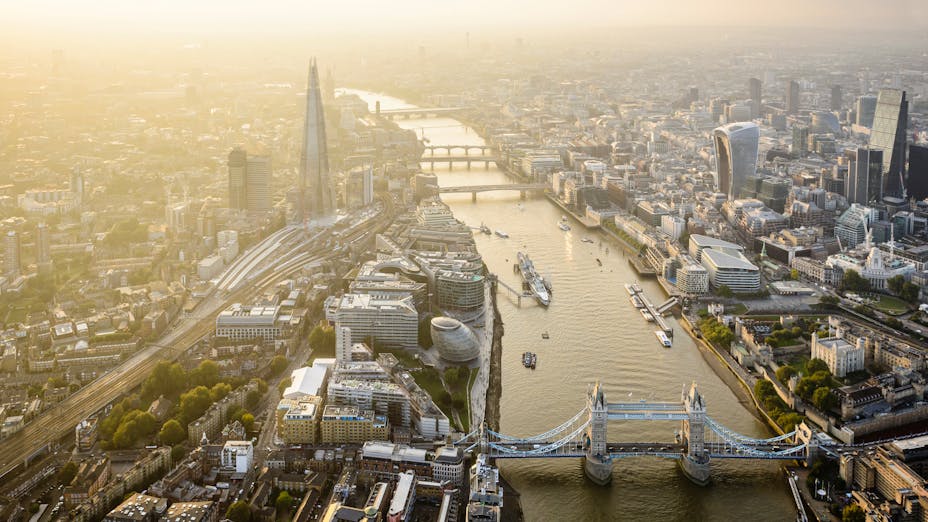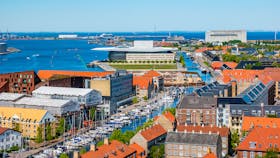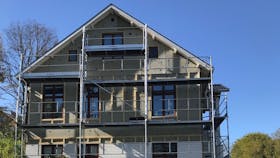With London’s Mayoral elections on the horizon next year, YouGov polling suggests that environmental concerns are at an all-time high amongst the electorate. For their part, the candidates have been setting out plans to tackle climate change. These include proposals for road emissions and public transport, the built environment and reducing waste, as well as overarching aims for the city to achieve carbon-neutral status, which could make London one of Europe’s most climate-resilient capitals within the next ten years.
As the candidates firm up their manifesto commitments and policy proposals over the coming year, we take a look at the current status in London, reflecting on carbon reduction policies to date and looking ahead to what’s next.
Building on past success towards a carbon-neutral London
The UN has identified the world’s building stock as a major contributor to the climate crisis. Currently, 78 percent of London’s carbon emissions originate from homes and workplaces. Improving the energy efficiency of the city’s buildings, for both new construction and existing stock, will be imperative if London seeks to match the ambitions of other leading cities and achieve carbon-neutrality by 2030.
London’s retrofit accelerator programmes
London has already made numerous strides towards carbon reduction and implemented numerous policies to support this. For example, the retrofit accelerator programmes for homes and workplaces seek to reduce carbon emissions by improving energy efficiency in existing homes and commercial buildings. The initiative has already helped improve more than 130,000 London homes since its inception in 2009.
Similarly, the retrofit accelerator for workplaces initiative works with the National Health Service, government departments, schools, and cultural organizations to implement renovation projects that improve the energy efficiency in public buildings. The Greater London Authority (GLA) and the European Regional Development Fund (ERDF) jointly fund the programmes until 2022.
Carbon reduction for major new developments
New policies stemming from the London Plan have also increased London’s commitment to reducing emissions in relation to major new developments. Under the policies, all major developments should now maximize their on-site carbon reductions and London has mandated zero-carbon new homes since 2016, while non-domestic buildings had to comply from the end of 2019.
Where developers cannot achieve a zero-carbon rating due to technical constraints, they are obliged to offset their emissions by paying into local carbon-offsets funds managed by London’s 35 Local Planning Authorities (LPA). The funds remain ring-fenced to support other carbon-saving initiatives, and developers must pay £60 per tonne of carbon dioxide to the applicable LPA. Since the offset policy came into effect, LPAs have secured more than £50 million in payments earmarked for local projects that improve energy efficiency. As part of the new draft London Plan, the offset price is set to increase to £95 per tonne of carbon dioxide emissions.
Some of the project types already funded by the carbon-offset programme include:
- Schools
- Private sector housing grants and corporate estates’ energy efficiency improvements.
- Education and behavioural change initiatives.
- Decentralizing energy sources.
- Reducing fuel and energy poverty.
- Establishing community energy funds.
- Providing business energy grants. bon dioxide emissions.
The fund’s guidance prioritises projects where energy efficiency solutions are readily available. However, LPAs have yet to maximise their spending on new initiatives with up to 75 percent of funds collected since 2016 remaining unspent as of 2019. To achieve the city’s goals, obstacles around fund distribution will need to be tackled to ensure meaningful projects that serve the constituents are delivered including improving quality of life for the most vulnerable communities.
Reducing carbon emissions and improving energy efficiency for London’s buildings
Renovating structures, both domestic and commercial, remains one of the most viable solutions for reducing carbon emissions and improving energy efficiency in the world’s cities. It is the easiest way to reduce energy demand and achieve the commitments of the Paris Agreement. Improving the insulation in structures while ensuring the resilience of buildings can help reduce the energy costs for occupants, provide them with comfortable living spaces, and cut down building emissions drastically while also improving their fire safety.
Some of the UK Green Building Council’s policy recommendations include:
- Establish net-zero carbon standards for new building projects, both domestic and commercial.
- Setting retrofit and refurbish targets for existing building stocks using energy-efficient technologies.
- Amending minimum energy efficiency standards for rented properties.
- Introducing mandatory operational energy ratings for all commercial properties.
- Provide financial incentives for the commercial sector to invest in energy-efficient technologies.
- Use government procurement policies to create a favourable market for energy-efficient products and services.
Alongside this, London will be conscious of fire safety considerations when renovating buildings to ensure that improvements to the stock are resilience and protect public safety whilst delivering on carbon goals. Similarly, improvements present the opportunity to address growing acoustic concerns in cities, where high-density mix-used developments alongside the growing 24-hour economy present ever great challenges, but where solutions are readily available through employing a holistic approach to building performance.
Whoever is elected, London will no doubt follow through on commitments towards becoming one of the next carbon-neutral capital cities. Investing in refurbishment to make the city’s buildings resilient and fire safe at the same time can help it to reduce its carbon emissions, improve the air quality, and provide safer buildings for its occupants and prepare them for the future.
To improve existing cities we work with governments, public institutions, and private stakeholders to increase their building’s energy efficiency and reduce their carbon emissions. Achieving the UN’s sustainability goals will require every city to take drastic steps that ensure they create an environment where all of its inhabitants can live comfortably while also reducing its impact on the environment by renovating their existing building stocks.





